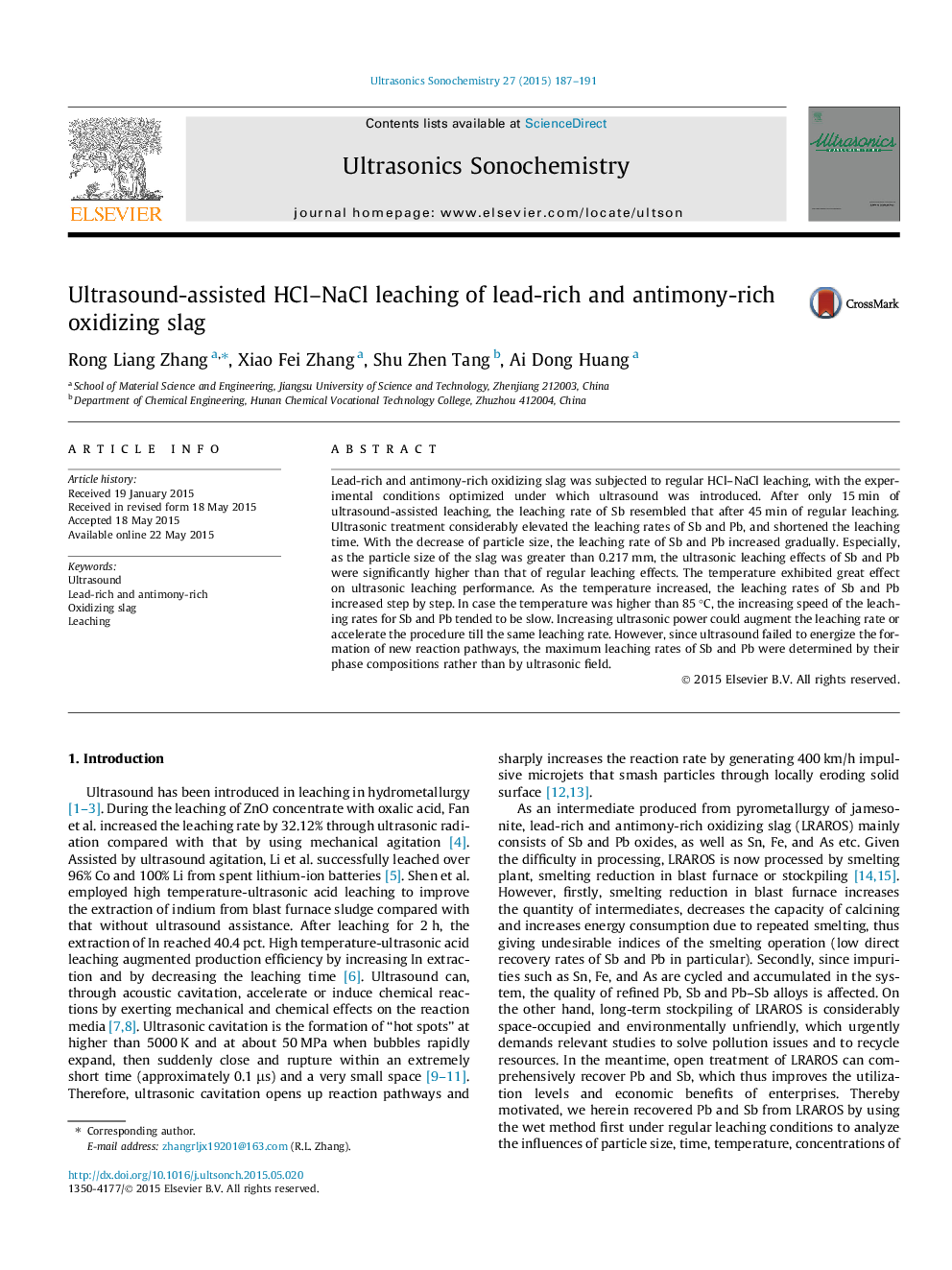| Article ID | Journal | Published Year | Pages | File Type |
|---|---|---|---|---|
| 7703787 | Ultrasonics Sonochemistry | 2015 | 5 Pages |
Abstract
Lead-rich and antimony-rich oxidizing slag was subjected to regular HCl-NaCl leaching, with the experimental conditions optimized under which ultrasound was introduced. After only 15 min of ultrasound-assisted leaching, the leaching rate of Sb resembled that after 45 min of regular leaching. Ultrasonic treatment considerably elevated the leaching rates of Sb and Pb, and shortened the leaching time. With the decrease of particle size, the leaching rate of Sb and Pb increased gradually. Especially, as the particle size of the slag was greater than 0.217 mm, the ultrasonic leaching effects of Sb and Pb were significantly higher than that of regular leaching effects. The temperature exhibited great effect on ultrasonic leaching performance. As the temperature increased, the leaching rates of Sb and Pb increased step by step. In case the temperature was higher than 85 °C, the increasing speed of the leaching rates for Sb and Pb tended to be slow. Increasing ultrasonic power could augment the leaching rate or accelerate the procedure till the same leaching rate. However, since ultrasound failed to energize the formation of new reaction pathways, the maximum leaching rates of Sb and Pb were determined by their phase compositions rather than by ultrasonic field.
Keywords
Related Topics
Physical Sciences and Engineering
Chemistry
Chemistry (General)
Authors
Rong Liang Zhang, Xiao Fei Zhang, Shu Zhen Tang, Ai Dong Huang,
